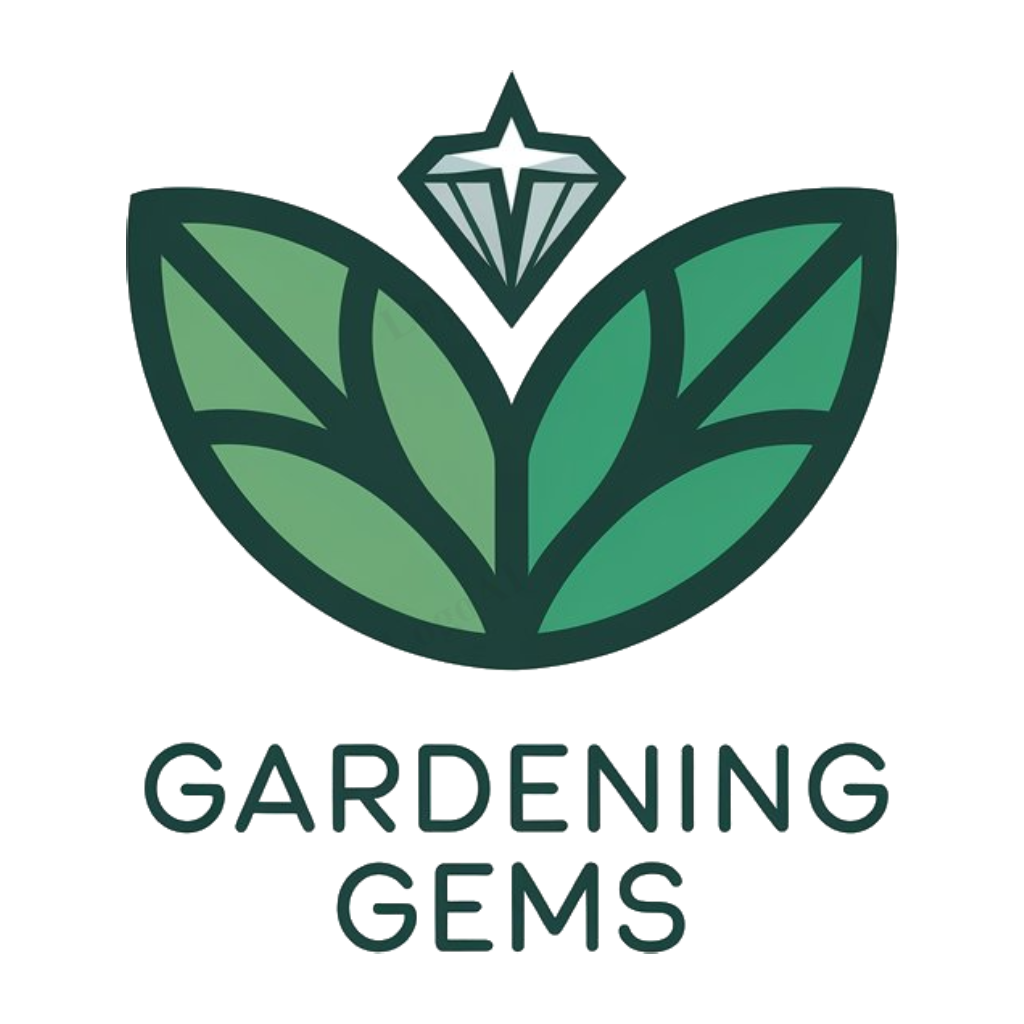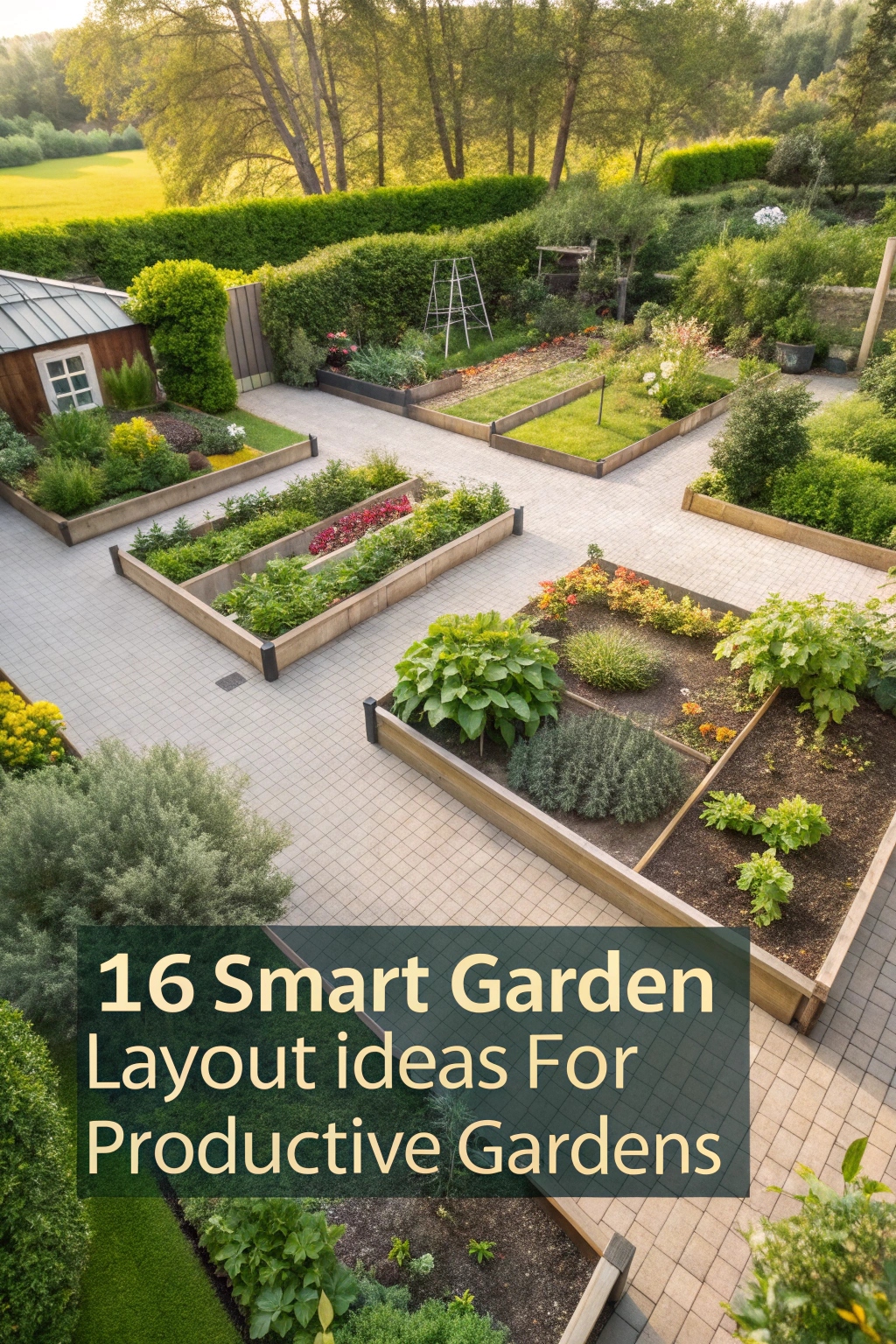Do you want a garden that grows more food? Keyhole garden design is a special way to make your garden better. It can help you grow up to 50% more crops, which means you’ll have more fruits and vegetables to eat.
This is a big deal for gardeners who want to get the most out of their garden. By using a keyhole garden design, you can make your garden more productive and have more fun growing your own food. Let’s explore this concept further and see how it can help you have a super cool and productive garden.
Maximizing Space With Raised Beds

Raised beds offer an efficient way to maximize space in small gardens. By elevating the soil, they provide better drainage and aeration, allowing for more plants to be grown in a smaller area. This technique is particularly useful for urban gardens or areas with poor soil quality, enabling gardeners to make the most of their available space.
Vertical Gardening for Small Yards

Vertical gardening maximizes space in small yards by growing plants upwards using trellises, arbors, or wall-mounted planters. This technique allows for increased plant density and variety, making it ideal for compact areas. It also adds visual interest and can help screen unwanted views or create shade, making the most of limited outdoor space.
Creating a Productive Container Garden
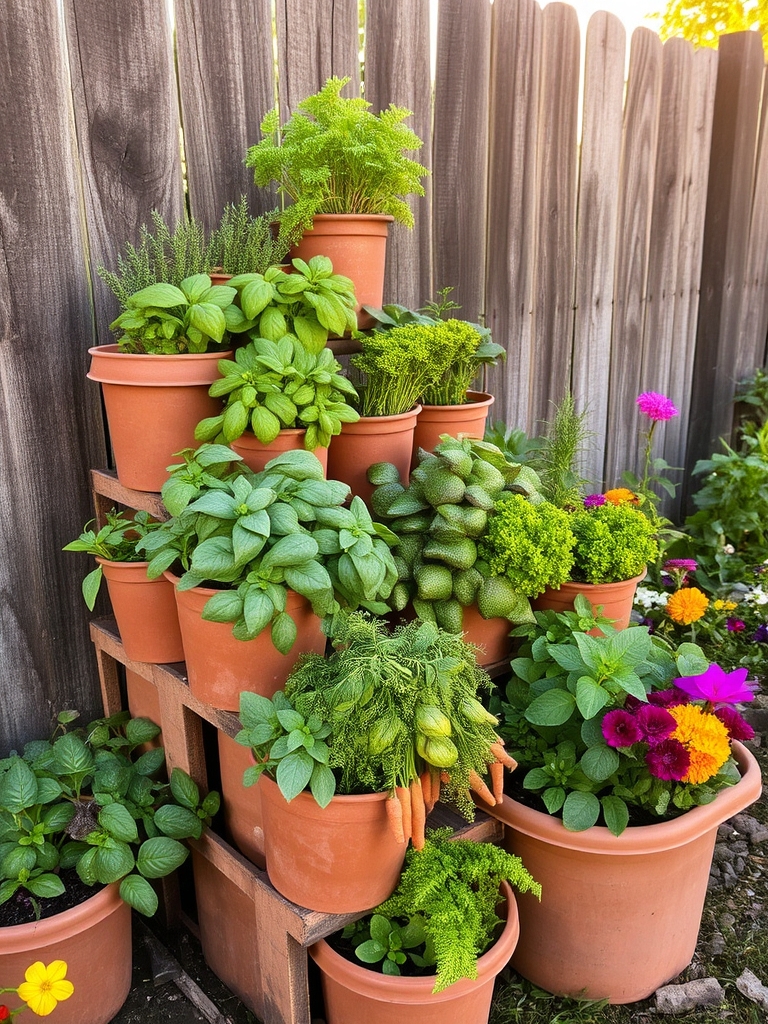
Maximize space with a productive container garden, using vertical planters and tiered systems to grow a variety of herbs, vegetables, and flowers. Choose containers with good drainage and select plants suitable for container growth, considering factors like sunlight, soil, and watering needs to guarantee a thriving and diverse garden.
The Benefits of Keyhole Garden Design
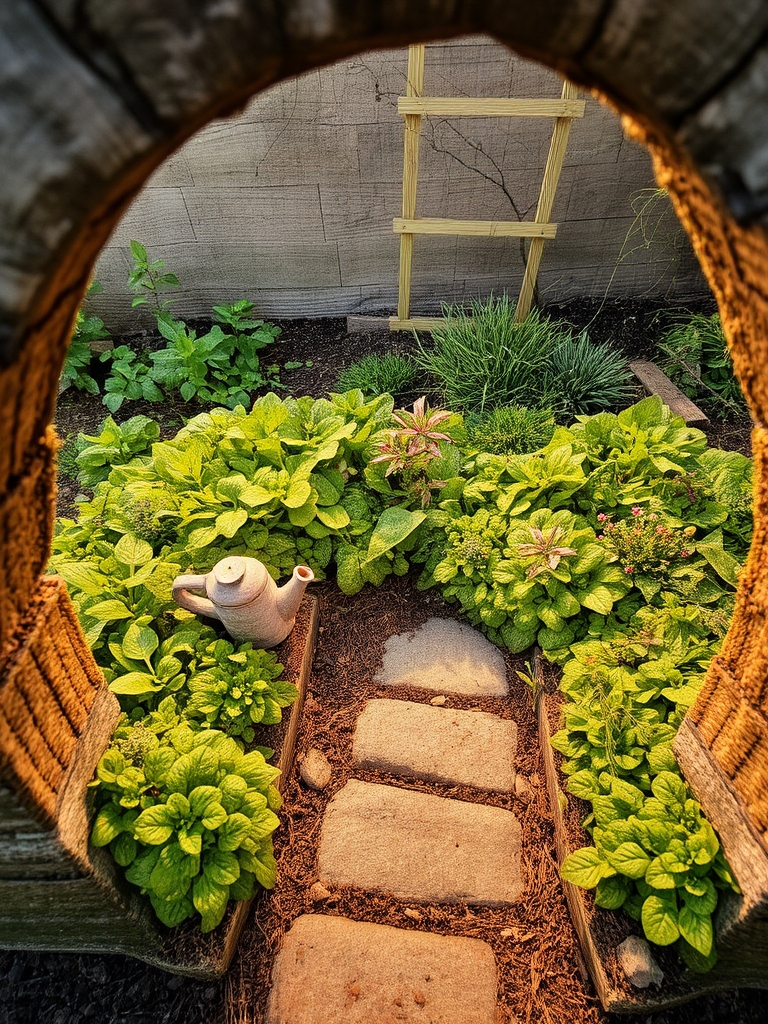
Keyhole garden design offers numerous benefits, including efficient water use, reduced waste, and increased accessibility. This circular design allows for easy reach to all areas, minimizing pathways and maximizing growing space. It also promotes healthy soil and root growth, making it an ideal choice for small or irregularly shaped gardens.
Designing a Garden for Year-Round Harvest
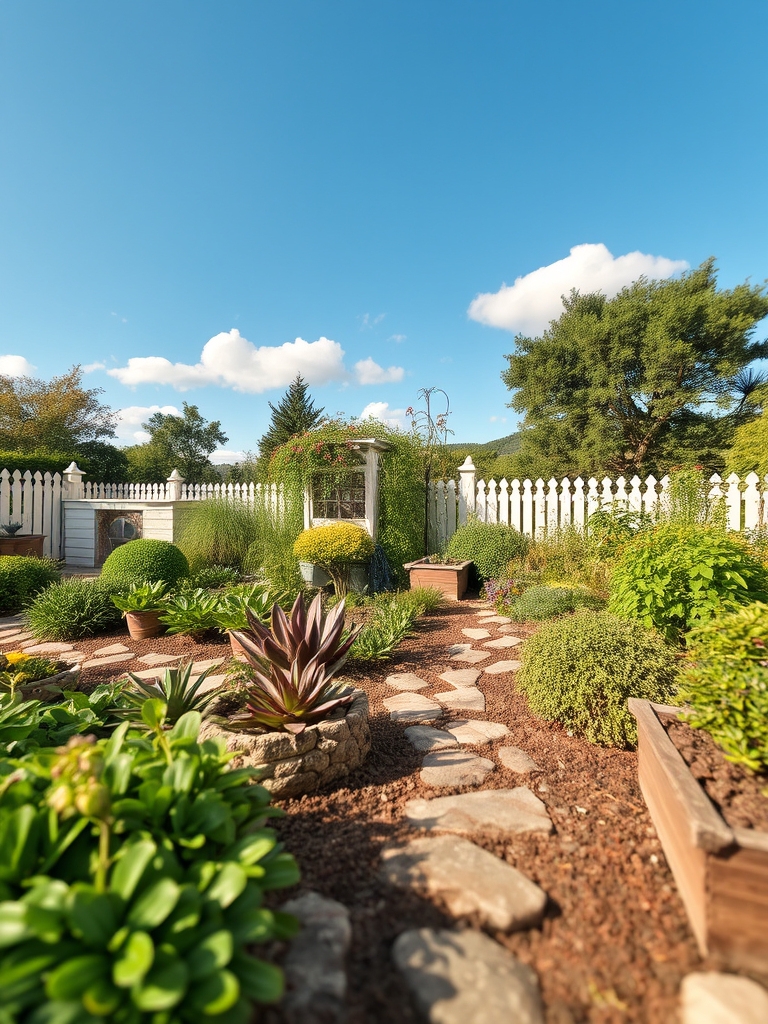
Designing a garden for year-round harvest involves careful planning and selection of plants with staggered maturity dates. This approach guarantees a continuous supply of fresh produce throughout the year, with some plants thriving in cooler seasons and others in warmer months, creating a diverse and sustainable garden ecosystem.
Using Trellises for Space-Saving Gardening
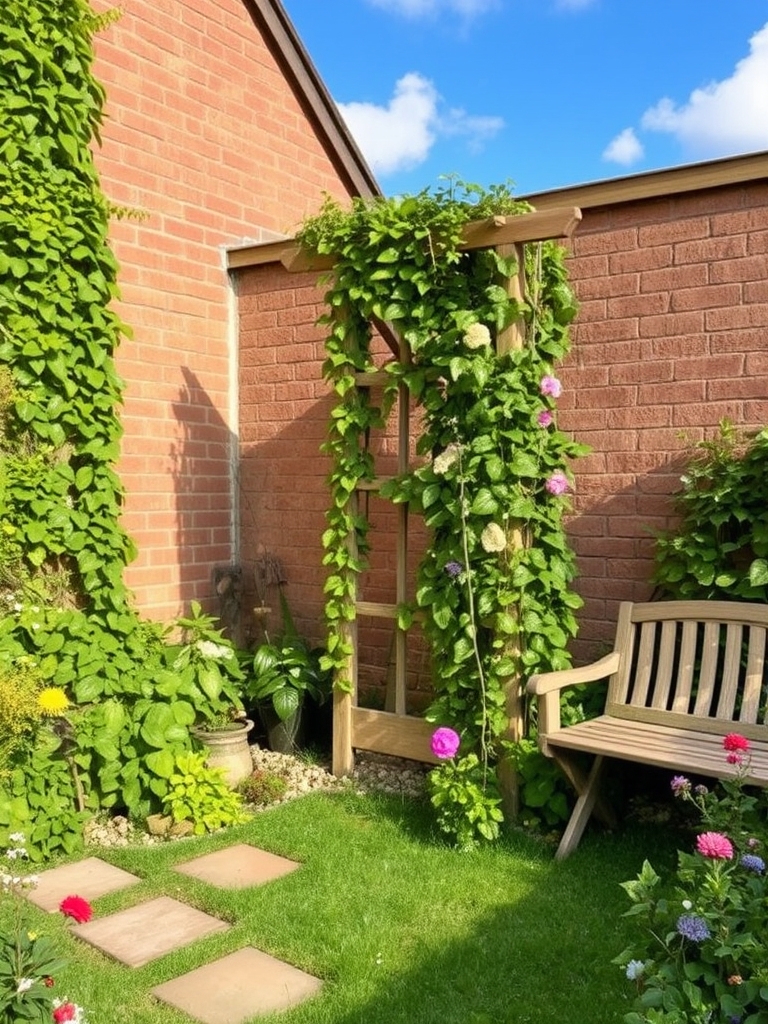
Trellises provide a space-saving solution for gardening, allowing vines and climbing plants to grow upwards. They maximize vertical space, making them ideal for small gardens or urban areas. By training plants to climb, trellises help increase yields and add visual interest to the garden, while keeping the ground clear for other plants or pathways.
Building a Garden With Recycled Materials

Building a garden with recycled materials reduces waste and adds character. Use old pallets, containers, and bricks to create unique planters and pathways. Repurpose wooden fences, trellises, and arbors to add structural elements, and incorporate natural materials like bamboo and driftwood for a rustic touch, creating a one-of-a-kind garden.
Incorporating Pathways for Easy Maintenance

Incorporating pathways into your garden layout is essential for easy maintenance. Well-designed pathways allow for effortless navigation, reducing soil compaction and preventing damage to plants. They also provide a clear route for watering, pruning, and harvesting, making upkeep a breeze and ensuring your garden remains healthy and thriving. Stone, gravel, or brick pathways are popular options.
Growing a Variety of Plants in a Small Space
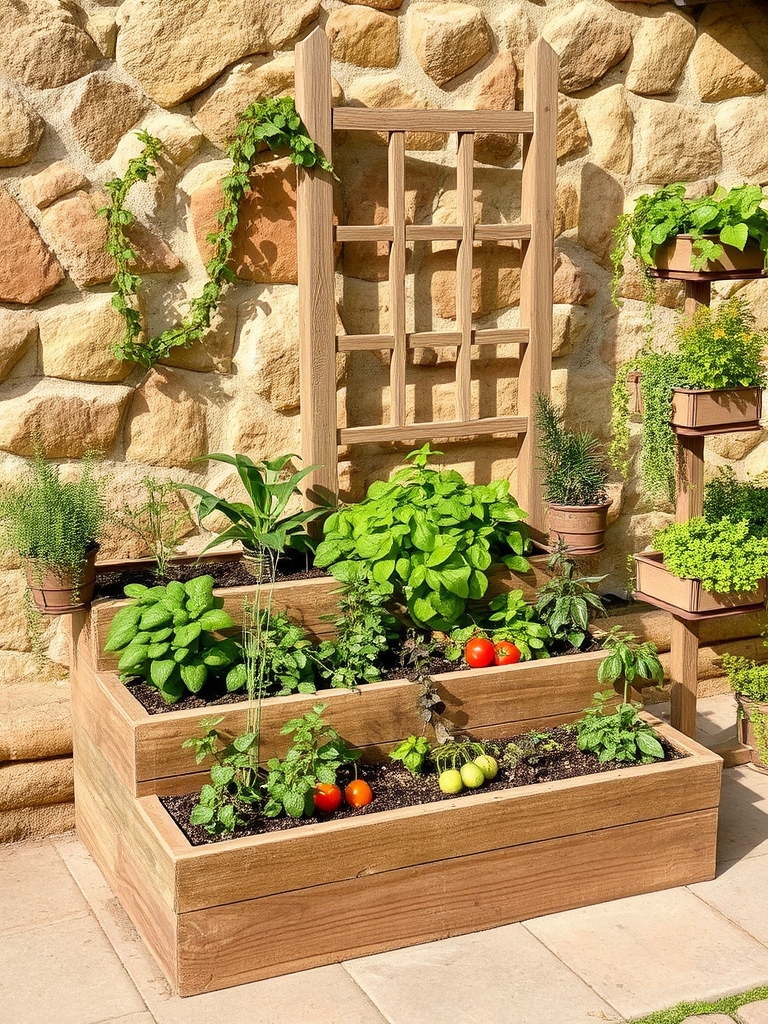
Utilize vertical planters, trellises, and tiered gardens to maximize space. Incorporate a mix of plants with varying textures, colors, and growth habits to create visual interest. Consider companion planting to promote healthy growth and minimize pests, allowing for a diverse range of plants to thrive in a small area.
Garden Layout Ideas for Beginner Gardeners
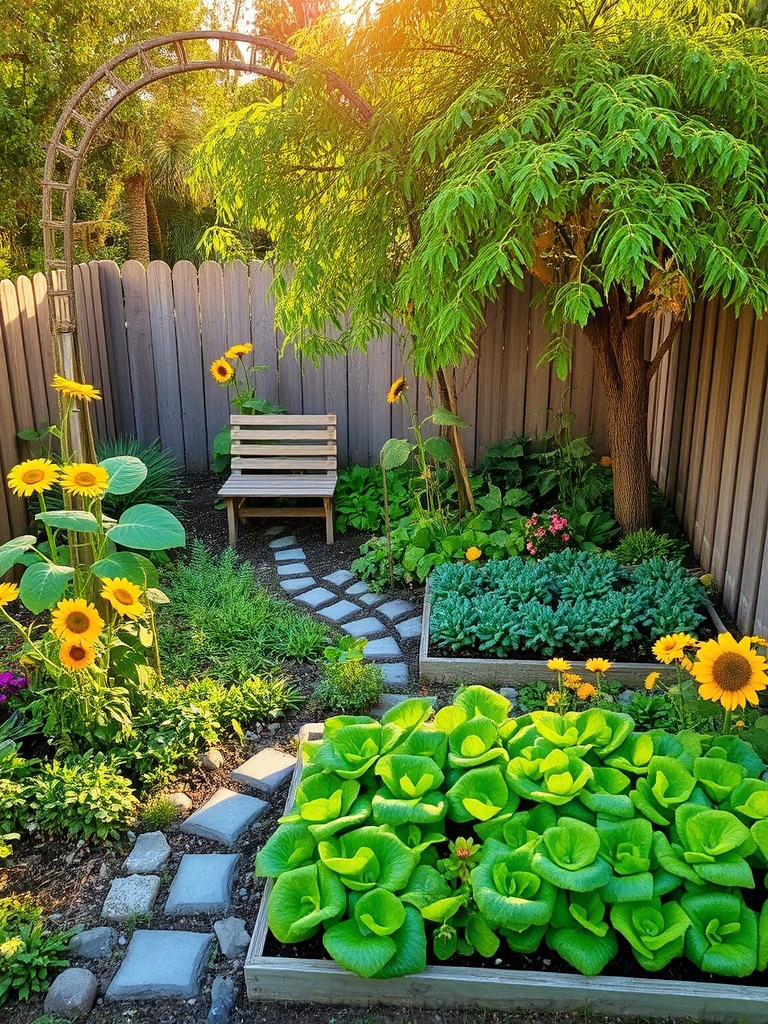
For beginner gardeners, simple and functional garden layouts are ideal. Start with a small plot and arrange plants by type, considering factors like sunlight and watering needs. A rectangular or square shape with paths and beds is easy to maintain and allows for future expansion, making it perfect for those new to gardening.
Managing Sunlight and Shade in Your Garden
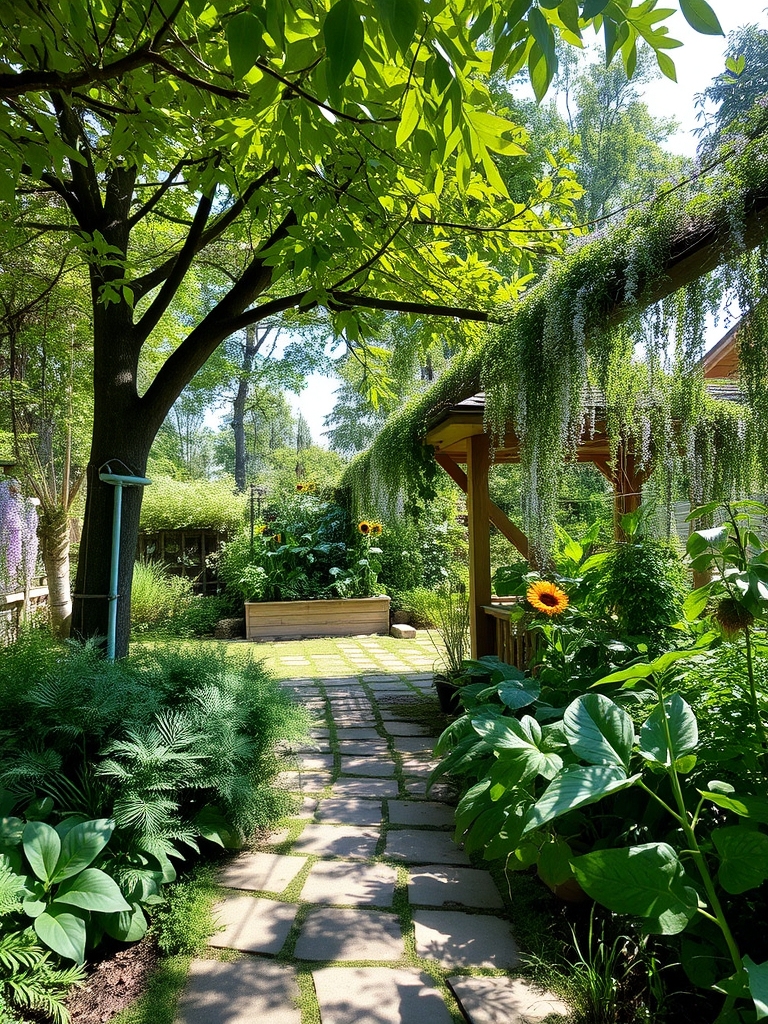
Managing sunlight and shade in your garden involves strategically placing plants according to their light requirements. Consider the path of the sun and create shade using trees, umbrellas, or gazebos to protect sensitive plants. This balance guarantees ideal growth and prevents scorching or inadequate light, promoting a healthy and thriving garden ecosystem.
Using A-Frame Planters for Additional Space
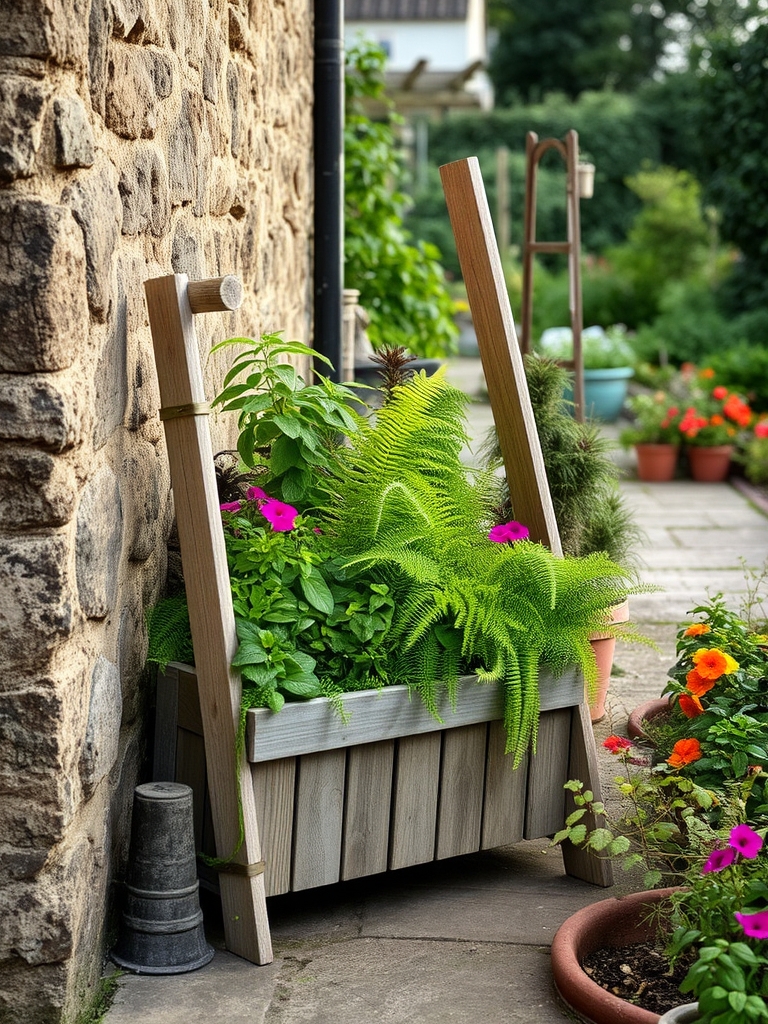
A-frame planters provide additional space and visual interest to gardens. They can be placed in narrow areas, such as pathways or against walls, allowing for more plants to be grown. The vertical design also adds a decorative element, making them a great option for small or urban gardens where space is limited.
Creating a Focal Point in Your Garden
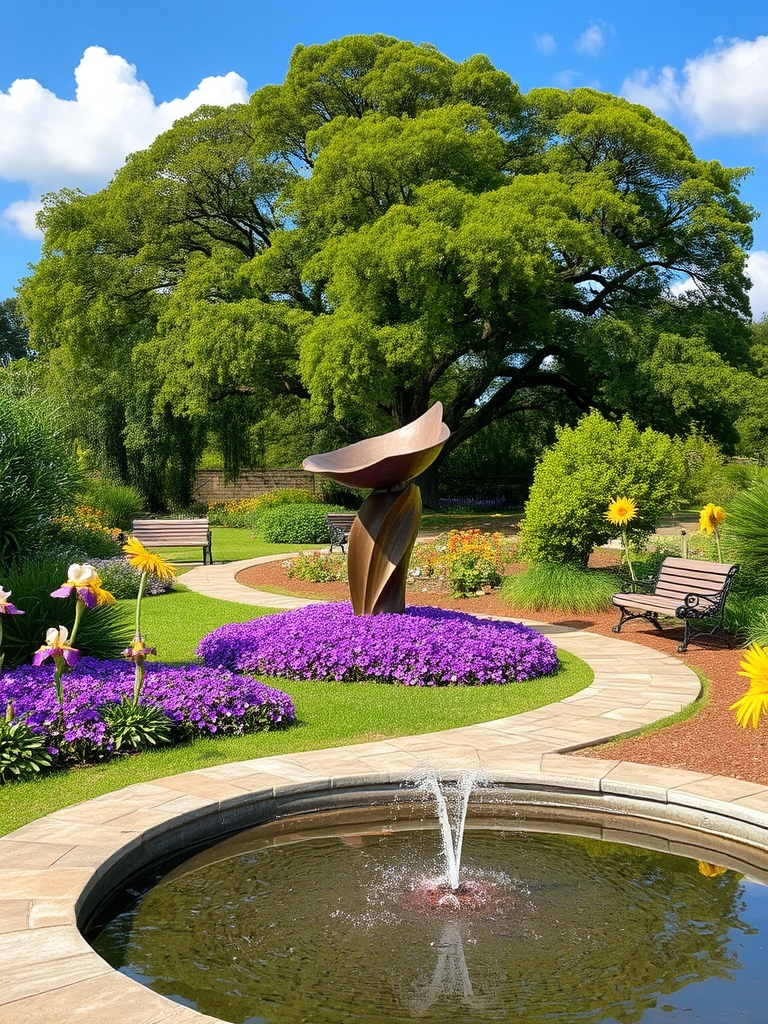
A focal point in your garden draws the eye and creates visual interest. Use a striking statue, vibrant flowers, or a unique water feature to anchor the space. Place it where it can be easily seen, such as at the end of a pathway or in a central location, to create a sense of balance and harmony in your garden design.
Making the Most of a Sloping Garden
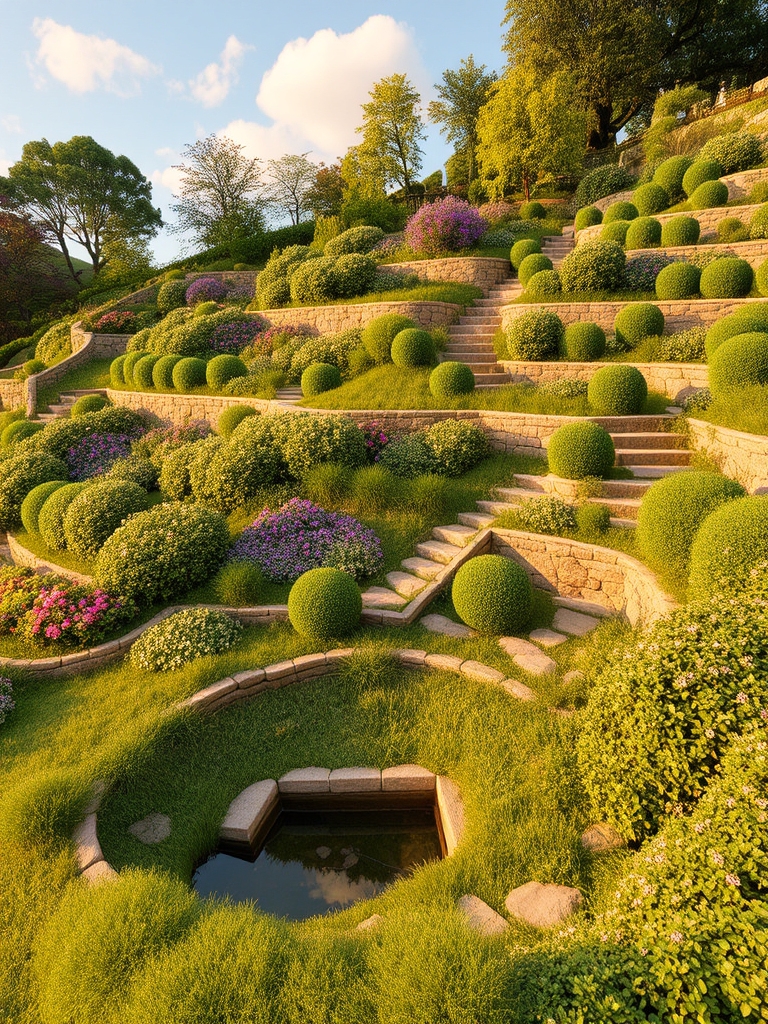
A sloping garden can be a challenge, but with clever design, it can become a unique feature. Terracing, retaining walls, and multi-level planting can help create a beautiful and functional space. This design approach allows for ideal use of the land, preventing erosion and creating distinct areas for different plants and activities.
Effective Watering Systems for a Productive Garden
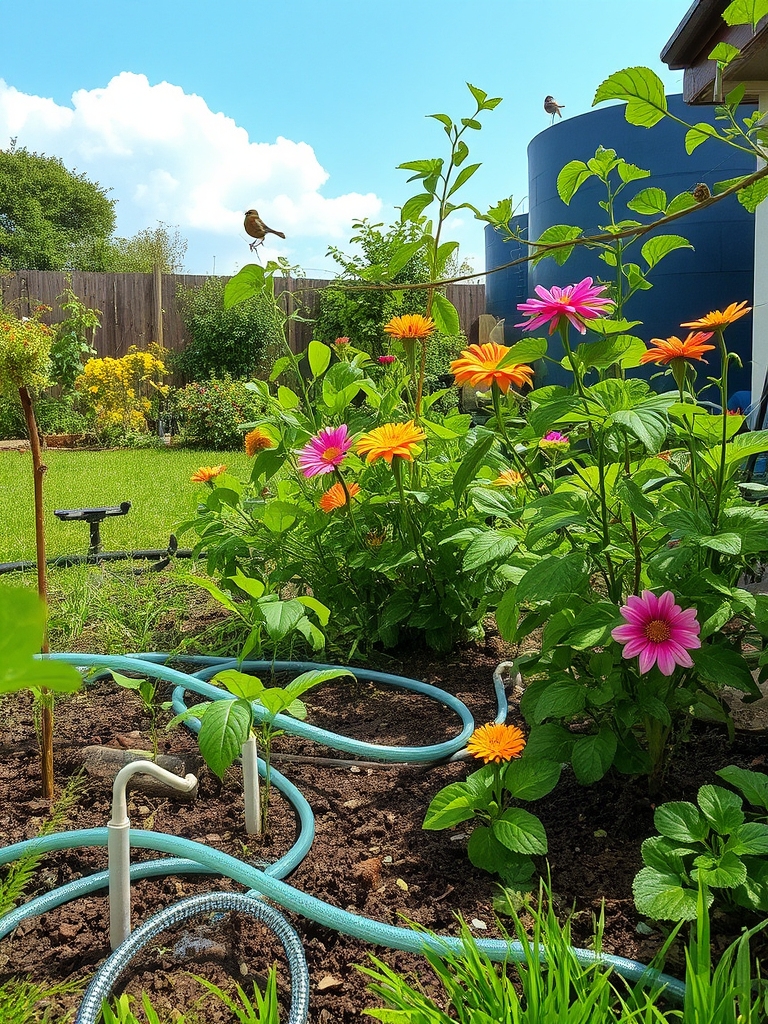
Effective watering systems are vital for a productive garden. Drip irrigation and soaker hoses deliver water directly to roots, minimizing waste and reducing evaporation. Rainwater harvesting and grey water reuse also help conserve this valuable resource, ensuring plants receive the right amount of moisture to thrive and maximizing water efficiency in the garden.
Blending Flowers and Vegetables in Your Garden
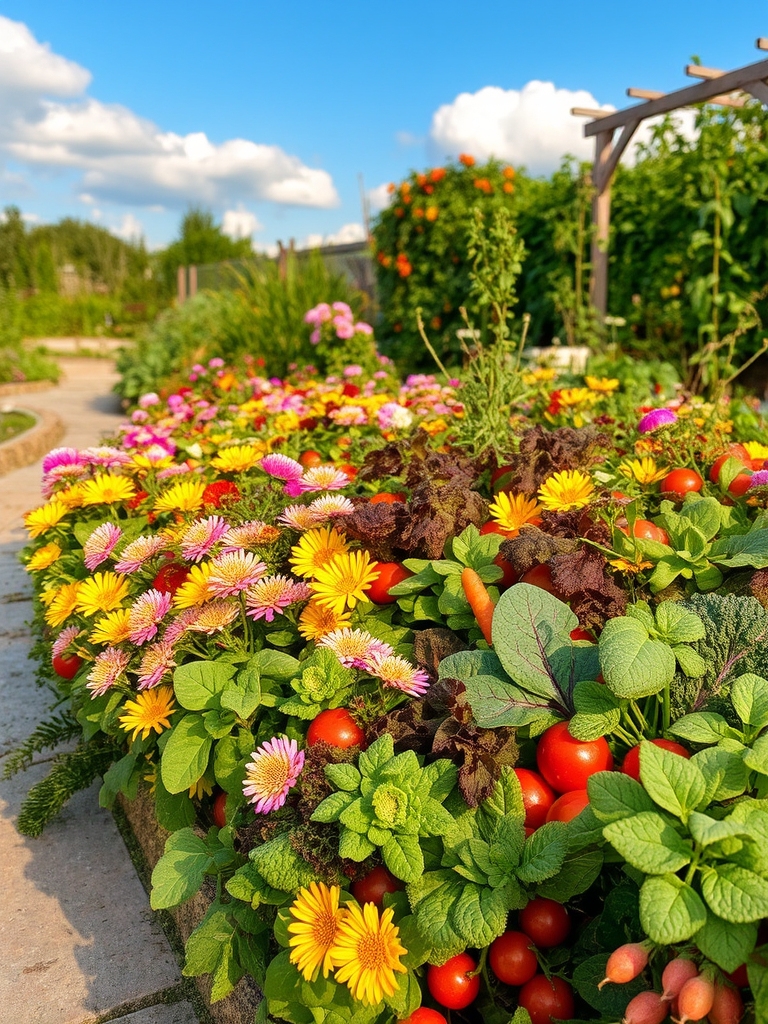
Blending flowers and vegetables in your garden creates a visually appealing and productive space. This approach, known as edible landscaping, combines the beauty of flowers with the functionality of a vegetable garden, attracting pollinators and adding color to your outdoor space while providing fresh produce.
Conclusion
You’ve hit the nail on the head with these smart garden layout ideas, optimizing space and productivity. By incorporating key elements, you’ll be cutting to the chase, creating a thriving oasis that’s both functional and visually stunning, with each detail working in harmony to bring your garden to life.
